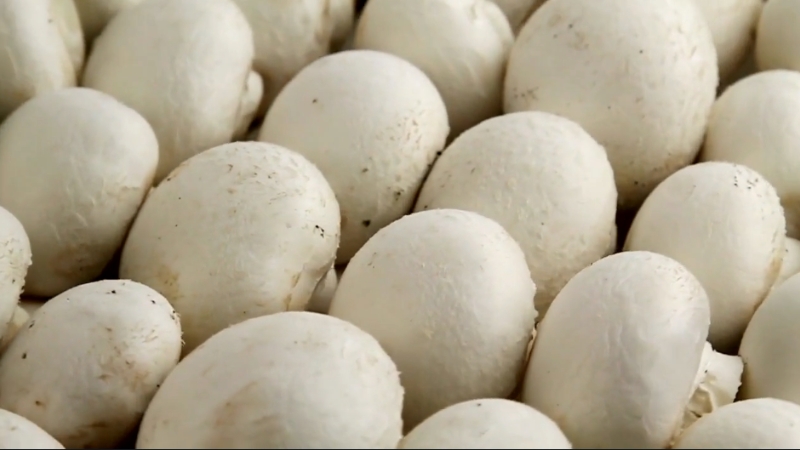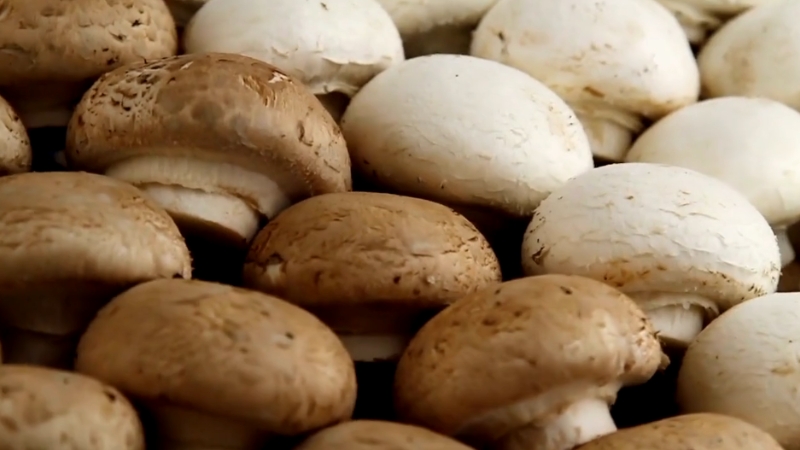Before we get into flavor and nutrition, let’s clear something up: both white mushrooms and baby bellas are actually the same species—Agaricus bisporus. The difference lies in their maturity and how long they’ve been growing.
- White Mushrooms (also called button mushrooms): These are the youngest variety. They have a smooth, pale cap and a very mild flavor. They’re picked before the cap has opened.
- Baby Bellas (also called cremini mushrooms): These are just slightly older than white mushrooms. Their caps are darker, more brown than white, and they have a firmer texture and a more pronounced, earthy flavor.
If left to grow even longer, baby bellas eventually become portobello mushrooms—the large, meaty mushrooms often grilled or stuffed.
Flavor Profile: Which Has the Better Taste?
This is the heart of the debate for most home cooks, chefs, and food enthusiasts—especially if you’re looking to create meals that are not only balanced but also deeply flavorful.
The choice between white mushrooms and baby bellas can significantly impact the outcome of a dish, depending on what you want your mushrooms to do in the recipe: quietly support other flavors or boldly stand on their own.

White Mushrooms—also known as button mushrooms—are the most commonly found variety in grocery stores. They’re widely used because of their mild, neutral flavor that works well across many types of cuisines.
When raw, they have a crisp, almost sponge-like bite, but very little taste, making them perfect for dishes where mushrooms aren’t meant to dominate the flavor.
They’re especially great in recipes like creamy pasta sauces, scrambled eggs, light soups, or stir-fries where you want a gentle texture and a filler ingredient that absorbs sauces without altering the dish’s main flavor. They also play well with kids or picky eaters who may shy away from strong, earthy notes.
View this post on Instagram
Baby Bella Mushrooms—often labeled as cremini mushrooms—are essentially more mature white mushrooms. As they age, they develop a deeper brown color, firmer texture, and most importantly, a stronger, earthier flavor.
Compared to white mushrooms, baby bellas are richer in umami—that savory, “meaty” quality that adds complexity to food. When cooked, they not only hold their shape better (important for roasting or grilling), but they also develop a caramelized, almost beefy taste, especially when seared properly in butter or olive oil.
This makes them a go-to mushroom for recipes where mushrooms are meant to shine—like in risottos, mushroom-based sauces, burgers, or grain bowls.
So which is better for flavor? While white mushrooms offer flexibility and a subtle, versatile taste, baby bellas often win when flavor is the priority. Their more complex profile makes them ideal for dishes where you want richness, depth, or even to mimic the umami of meat in vegetarian cooking.
Verdict:
- If you want flavor-forward cooking, baby bellas take the crown.
- If you’re looking for a gentle background note or an easy filler, white mushrooms get the job done without stealing the spotlight.
Texture: Firm vs Soft

Baby bellas are noticeably firmer than white mushrooms, which gives them a better mouthfeel, especially in cooked recipes like stir-fries, pasta, or tacos. They don’t get as mushy, which can sometimes happen with white mushrooms if they’re overcooked.
White mushrooms, while softer, are easier to slice and dice raw and are often favored for fresh dishes like salads or cold pasta dishes where a more delicate texture is preferred.
Nutritional Value: Are They Both Good for You?
Yes, both baby bellas and white mushrooms offer solid nutritional benefits. Since they’re the same species, their nutrition is almost identical—though baby bellas may edge out slightly due to their maturity.
Here’s a basic comparison per 100g (based on USDA data):
Both are: White mushrooms tend to be slightly cheaper and more widely available than baby bellas, though the price difference isn’t huge. You might pay $0.50–$1.00 more per pound for baby bellas, depending on the season and location. If you’re cooking on a budget, white mushrooms still do the trick—just expect less flavor and more moisture. If you want flavor, depth, and a heartier mushroom that can stand up to bold seasonings and heat, baby bellas are the winner. They offer a more complex taste, better texture, and more versatility in savory dishes. Think of them like the spiciest foods in the world—able to hold their own against intense flavors without losing their punch. However, if you’re after a lighter taste, looking to keep your meal simple, or adding mushrooms raw, white mushrooms are a solid, economical choice. The great news? You don’t really have to choose. Both are healthy, budget-friendly, and easy to work with. Keep both in your kitchen and match them to your meal and mood.
Nutrient
White Mushrooms
Baby Bella Mushrooms
Calories
22
23
Protein
3.1g
2.5g
Fiber
1.0g
1.0g
Potassium
318mg
448mg
Selenium
9.3mcg
8.9mcg
Vitamin D (UV-exposed)
Varies
Varies
Cooking with White vs. Baby Bella Mushrooms
Cooking Scenario
Best Mushroom to Use
Why It Works Well
Tips for Best Results
Light cream sauces or soups
White Mushrooms
Mild flavor blends into delicate bases without overpowering the dish
Slice thinly and sauté briefly to preserve texture
Egg-based dishes (e.g., omelets, quiche)
White Mushrooms
Soft texture and light taste pair well with eggs and cheese
Pre-cook before adding to prevent excess moisture
Fresh salads and raw dishes
White Mushrooms
Easy to eat raw, neutral taste enhances freshness
Slice paper-thin and toss with lemon or vinaigrette for brightness
Kids’ meals or picky eaters
White Mushrooms
Subtle and not too “mushroomy”
Dice small or blend into sauces
Savory stews and braises
Baby Bella Mushrooms
Earthy depth stands up to slow cooking and bold flavors
Brown them first for better flavor
Stuffed mushroom appetizers
Baby Bella Mushrooms
Firmer texture holds stuffing better, richer taste
Use the stems in the stuffing to avoid waste
Grilling or roasting
Baby Bella Mushrooms
Meatier texture withstands dry heat, intensifies flavor
Brush with oil, garlic, and herbs before roasting
Plant-based or vegetarian mains
Baby Bella Mushrooms
Deep umami flavor makes a great meat substitute
Combine with lentils, beans, or grains for hearty dishes
Pasta dishes with bold sauces
Baby Bella Mushrooms
Compliments tomato-based or garlic-heavy sauces
Sauté with olive oil and red pepper flakes for a flavorful base
Sandwiches, burgers, or tacos
Baby Bella Mushrooms
Chewy and juicy when grilled or pan-seared
Marinate in balsamic or soy sauce before cooking for added punch
Which Is More Affordable?

Which Should You Choose?

